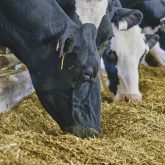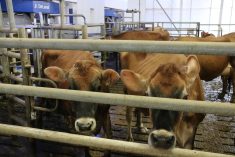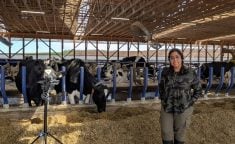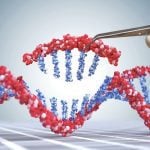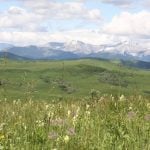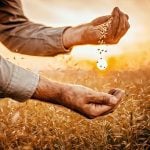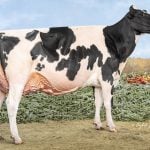The health and integrity of a cow’s hoof are critical for its overall well-being, productivity, and profitability.
Inside every cow’s hoof, a silent factory works nonstop, turning living cells into rock-hard horn. This process, called keratinization, is like a high-stakes assembly line. It starts with soft, rapidly dividing cells that gradually fill with tough proteins.
As these cells mature, they’re packed with fibrous strands of keratin. Finally, the cells die, their contents solidify, and a sticky “glue” seals them together. The result? A dense, layered shield that withstands everything from muddy pastures to concrete floors.
Read Also
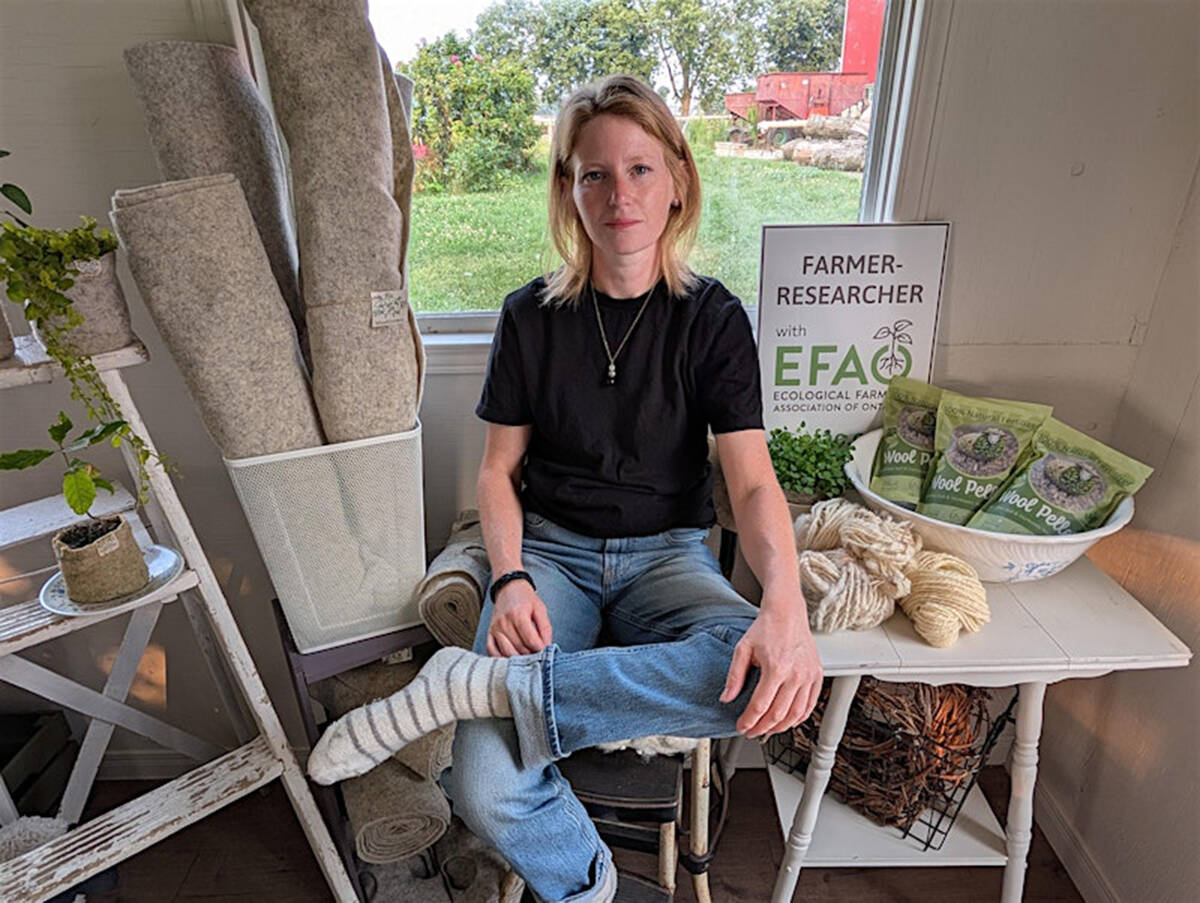
From fleece to fertile ground
Lindsey Weber turns Canadian wool into sustainable, biodegradable weed suppression and horticulture alternatives to plastic, boosting farm sustainability and revitalizing Canada’s wool industry.
Think of this shield as a brick wall. The dead, keratin-filled cells are the bricks. The sticky intercellular cementing substance (ICS) acts as mortar, binding bricks tightly together. But just like a wall crumbles without quality materials, hoof horn fails without precise nutrients.
Minerals and vitamins, especially zinc, copper, manganese, cobalt and biotin, are the architects, bricklayers, and mortar mixers ensuring the structure stays intact.
Zinc shapes and hardens the “bricks.” It activates enzymes that mold keratin proteins and regulates how cells transition from soft to solid. A deficiency in zinc can lead to impaired keratin formation, resulting in softer hooves that are more susceptible to damage and disease.
Studies have shown that cows with lower zinc levels in their claws are more prone to lameness. Supplementing zinc, especially in organic forms like zinc methionine, has been shown to improve hoof integrity and reduce the incidence of hoof disorders.
Copper welds sulfur atoms into unbreakable bonds between keratin proteins, similar to steel rods in concrete. Weak bonds mean brittle walls prone to sole abscesses and white line separations. Copper also partners with zinc to shield the ICS from oxidative damage, keeping the structure intact.
Manganese strengthens bones and cartilage, ensuring even weight distribution across hooves. Uneven pressure causes the wall to tilt, accelerating wear and inviting cracks. Manganese also activates antioxidants to protect the ICS from environmental stressors.
Cobalt keeps the “construction site” stocked. While cobalt itself does not directly participate in keratin formation, it supports the overall metabolic processes that provide the energy and building blocks needed for keratin synthesis. As part of vitamin B12, it ensures amino acids and fats, the raw materials for keratin and the ICS, flow steadily. Ignore cobalt, and the entire process slows: hoof growth stalls, repairs lag, and weaknesses persist.
Biotin, a water-soluble B vitamin, is perhaps the most important nutrient for hoof health. It is particularly important for the formation of long-chain fatty acids, which are essential components of the ICS that binds keratinocytes together.
Research has shown that biotin supplementation can significantly improve hoof integrity and reduce the incidence of hoof disorders such as white line disease, sole ulcers, and heel erosion. Supplementing biotin, especially in high-grain diets where ruminal synthesis may be insufficient, has been shown to improve hoof health and reduce lameness in dairy cows.
Not all minerals are created equal. Organic or chelated forms of trace minerals are far more effective than their inorganic counterparts. These minerals are bound to amino acids or peptides, making them easier for the cow’s body to absorb and utilize. Studies show that cows supplemented with organic trace minerals have stronger hooves, fewer lesions, and lower rates of lameness.
The interaction between trace minerals is also crucial for maximizing their benefits. Studies have shown that supplying a combination of complexed trace minerals (zinc, manganese, copper, and cobalt) is more effective in improving hoof integrity than supplementing with a single mineral.
For example, a two-year study on dairy herds found that cows fed a combination of complexed trace minerals had fewer incidents of claw disorders such as double soles, white line separation, and digital dermatitis compared to those fed only zinc or no complexed minerals.
The formation of keratin and the maintenance of hoof health are complex processes that depend on a variety of nutrients, including zinc, manganese, copper, cobalt, and biotin. These minerals and vitamins play critical roles in cellular differentiation, structural integrity, and protection against oxidative damage.
Ensuring adequate levels of these nutrients, especially during the periparturient period and early lactation, is essential for preventing hoof disorders and lameness in dairy cows. By improving the bioavailability of these trace minerals and vitamins, farmers can enhance hoof integrity, leading to better animal well-being, productivity, and profitability.







